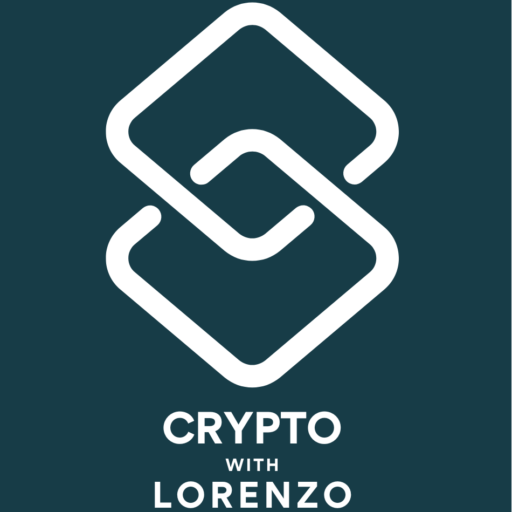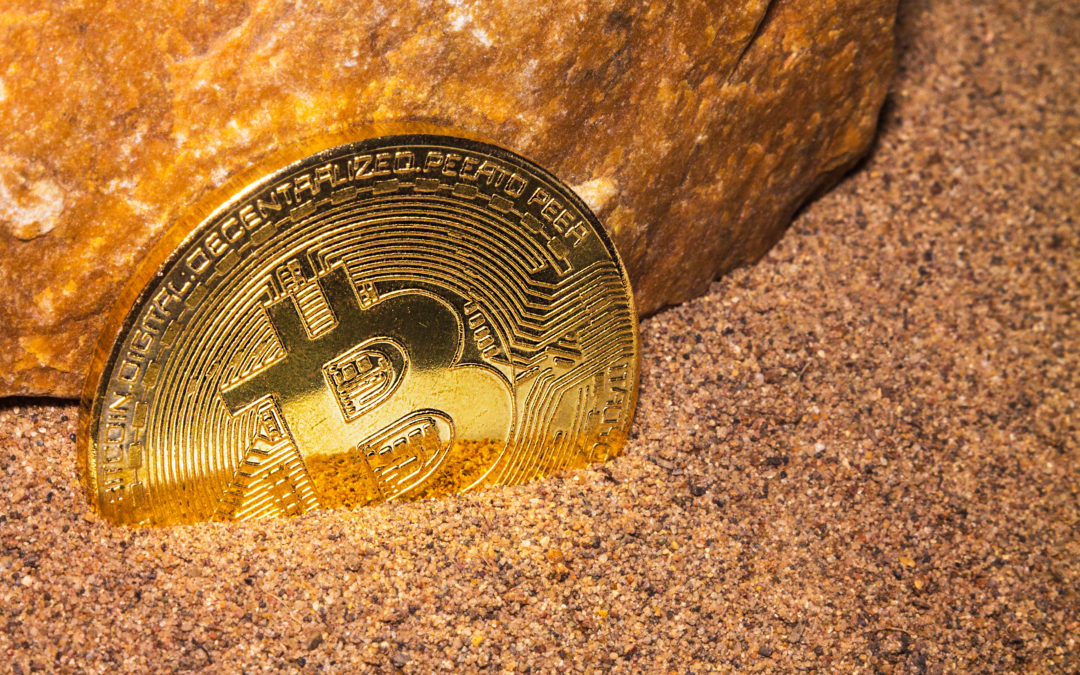Want to put your altcoins to good use whilst sitting idle in your wallets?
Besides staking, which I have previously covered, how can you earn regular income on other cryptos that aren’t available for staking?
Today, we’ll explore what’s available for some non-staking crypto assets.
Let’s begin.
Lending
If you plan on holding your digital assets for several months or even years, then putting your coins to use for lending via a reputable exchange is worthwhile.
However, the major caveat here is you shouldn’t have all of your crypto holdings on an exchange; the majority should still be kept in a non-custodial wallet, where you control the private keys.
In spite of this, I know many still prefer the convenience of having a third party to manage their keys and funds. In this case, you may as well put your crypto to use.
This is done through a section of the exchange, usually called ‘Earn’ or even ‘Lend(ing)’, with the former including a swathe of PoS assets.
Over the years, various exchanges have offered their retail clients crypto lending or similar earning services.
Binance and KuCoin are two popular choices for anyone interested in earning passive income on their crypto sitting in their exchange wallet(s). As I have used these services on and off over the years, I find these to be reliable and trustworthy exchanges.
Then again, this is just my (i.e., one person’s) opinion, so you be the judge before considering these.
Bitstamp has recently made a foray into crypto lending, offering lenders variable returns on BTC and other digital assets, not to mention staking options.
At the time of writing, Bitstamp appears to offer more generous lending rewards for BTC and XRP, albeit at modest rates of about 2% – 2.5% p.a.
Remember, lending also comes with risks, and you’ll have to trust the third-party platform involved (whether it’s centralised or part of DeFi) to ensure that the borrower will pay the loan back with interest.
Wrapped Bitcoin (WBTC) and WXRP
As many decentralised finance (DeFi) lending protocols are built on Ethereum, you can use an asset related to BTC but one that operates on platforms built on or compatible with Ethereum’s network.
A popular example of this is Wrapped Bitcoin (WBTC).
WBTC is an ERC-20 token – an Ethereum-native asset – pegged to Bitcoin’s price (generally ± 0.01 BTC). These ETH tokens are compatible with most DeFi protocols, unlike using BTC or XRP directly.
It is designed to allow for greater liquidity between BTC and ETH via this intermediary token. It helps boost Bitcoin’s presence on decentralised exchanges, many of which still primarily or exclusively feature ETH and its tokens.
You can switch from BTC to WBTC and lend the latter through automated market makers (AMMs) such as Aave, also allowing P2P lending and borrowing other assets across multiple chains, not just ERC-20 tokens.
This all ties into the broader concept of DeFi.
A run-down of how Wrapped Bitcoin works is available on its website.

Image by Black Salmon on Shutterstock
Wrapped assets have the added benefit of seamlessly being bridged with sidechains or layer 2s, such as Polygon, Arbitrum, Optimism, etc.
XRP’s equivalent is WXRP, although this is the first time I have heard about it, and it is seldom used compared to WTC. I would strongly recommend researching this before you even consider switching from XRP to the related ERC-20 token.
Indirect “staking”
Various networks are neither PoW nor PoS and opt for a different consensus mechanism to run a blockchain system successfully.
To compensate for not offering staking rewards, crypto projects, such as XRP and IOTA, which have had all their coins pre-mined, offer other incentives for their coin holders.
As no new coins can be created, there are other projects built on the main/base chain (Layer 1) people can use to stake their L1 coins.
For example, you can stake IOTA to earn SMR tokens relating to the Shimmer Network.
Even if a source claims that you can XRP, in reality, this most likely means receiving rewards for lending the coins or a type of token airdrop associated with XRP.
This leads me to my next point.
Airdrops
An airdrop is a distribution of free crypto, with the amount received usually corresponding to how many coins you held on a given date (a “snapshot date”).
Depending on where you have your crypto, some wallet providers (e.g., many centralised exchanges) set up the airdrop on your behalf, thus an automatic process.
However, for many non-custodial wallets, full control over the private keys equals full responsibility for managing the crypto. As a result, you generally need to register to receive an airdrop via the project offering the distribution.
Thinking of XRP, the Flare Network is one of the most popular examples. The project airdropped 4.28 billion FLR tokens roughly two years after the snapshot date in December 2020.
Flare Token Distribution Event https://t.co/3GkF2dbGBY
— Flare ☀️ (@FlareNetworks) January 9, 2023
Source: @FlareNetworks on X (Twitter)
This differs from FlareDrop, a separate set of events (i.e., over 36 months) for eligible FLR holders who have met the criteria to earn more FLR by holding Wrapped FLR (WFLR).
I find it excessive with so many crypto assets – so many wrapped tokens, spin-offs of other projects, meme coins of other meme coins, forks, and so on…
Having said this, I am not trying to de-legitimise FLR and any affiliated assets. Rather, I prefer to focus on BTC, ETH and a handful of altcoins and tokens.
Thinking of Bitcoin, one of the most high-profile airdrops occurred in August 2017, when BTC holders received a 1:1 Bitcoin Cash (BCH) airdrop due to Bitcoin’s hard fork. That is to say, for every BTC you held, you received the same amount of BCH.
Talk about a solid return on investment, particularly if you held BCH and sold it around its peak of ~$3,000 per coin in December 2017.
Regulators are coming for DeFi
I expect crypto lending options to remain limited for the foreseeable future because regulators want to restrict how the system is run.
In some ways, rules for this crypto subset are justified. I am specifically referring to centralised entities disguising themselves as a “decentralised” organisation when they are centralised.
The collapse of Terra Luna, FTX and other scams in the space have only emboldened the rule makers.
A notable example of late is Forsage, which was charged for reportedly operating a Ponzi scheme that claimed to be a DeFi platform.
DeFi does not offer many of the consumer protections and remedies available for traditional financial transactions. Users may have little recourse if a transaction goes wrong, and the parties involved in the transaction could literally be located anywhere in the world.
Government of the District of Columbia Department of Insurance, Securities and Banking (DISB)
Why am I mentioning this? If you plan to lend significant amounts of crypto via DeFi platforms, you should do your due diligence before proceeding. Moreover, it’s important to keep yourself (at least somewhat) updated about regulatory updates and changes to the space.
From my experience with legitimate and reputable exchanges in Australia, I have enquired about crypto lending and even staking via their platforms.
For example, Swyftx, a popular Aussie exchange, ceased its Earn program earlier this year, citing “the constantly changing regulatory landscape” as a main reason.
In all fairness, I don’t blame them, especially if it means avoiding getting into hot water with government regulations here.
If you’re a company, the last thing you want to do is piss off the state; not just here, but in several countries.
Thinking of the behaviour of US regulators and their antagonistic approach towards crypto companies and organisations (courtesy of Gary Gensler and Co. at the US SEC), I understand why these nascent enterprises would want to proceed with caution.
Additionally, I imagine several conventional banks, particularly the big end of town, would not be pleased about new companies coming along and offering lending services for crypto assets.
What about yield farming?
I have left this towards the end as I remain unconvinced about the security and reliability of this process.
In brief, yield farming involves locking coins or tokens in a DeFi protocol and earning a different crypto.
YF can be alluring for people wanting to earn interest on crypto assets,
However, consider the following things before proceeding:
– How does the (DeFi) protocol remain secure from hackers?
– You’re banking on the secondary token(s) to appreciate over time or, at the very least, hold their value.
– There’s a risk that you’re involved in a pump-and-dump scheme, which is possible when dealing with projects you don’t understand.
The second one can be quite a gamble, especially when it is a lesser-known token with little trading volume. A low volume often leads to wild price fluctuations.
This differs from staking, which rewards you with the same crypto asset locked up in a proof-of-stake (PoS) blockchain in return for helping secure the network, e.g., ETH, ADA, BNB, SOL, etc.
Here is a short list of resources covering YF in further detail.
– Bitcoin.com piece
– ‘A Beginner’s Guide to DeFi Yield Farming’ by Hedera
– ‘What is Yield Farming’ by The Motley Fool
– ‘DeFi Yield Farming Strategies and Risks’ by Finance Magnates
– ‘What Is Yield Farming in Decentralized Finance (DeFi)?’ From Binance Academy
– ‘Four Ways to DYOR on DeFi Yield Farms’ from Binance Academy
Final thoughts
When looking at current prices, $10-15 dollars per day of interest earned sounds like a pittance.
Still, if your favourite crypto assets explode in price, we’d be talking about serious passive income on your crypto (not just the capital invested).
Unfortunately, as is the case with companies offering staking options, some have dabbled in these products, only to withdraw them shortly after due to potential regulatory issues, as I touched on earlier.
In some jurisdictions, it boils down to crypto exchanges operating like banks for digital assets by offering investment products to everyday people – services in the form of earning X% interest on crypto held on a crypto exchange or even more generous APYs for assets liked over 30, 60, 90 days, etc.
I know these lending services are offering minuscule APYs to loaners. Still, every satoshi or fragment of any crypto asset could go a long way down the track, particularly if prices were to skyrocket once again.
Be wary of any service offering generous (e.g., > 5% APY) returns on Bitcoin, Litecoin, XRP or any other non-staking asset, let alone those offering modest returns on investment.
You are at the mercy of the company’s security measures (or lack thereof), and your capital could be at risk, so DYOR before investing in any of these services.
What are your preferred ways to earn passive income on your non-staking assets? Have I left anything out of this article I should have covered? Leave your thoughts in the comments section.
Thanks for reading!
Disclaimers
- N.B. None of this is financial advice; I am not a financial advisor. You are ultimately responsible for crypto investments, let alone in any asset class.
- The opinions expressed within this piece are my own and might not reflect those behind any news outlet, person, organisation, or otherwise listed here.
- Please do your research before investing in any crypto assets, staking, NFTs and other products affiliated with this space.
- For transparency, Bitcoin (BTC), Ethereum (ETH) and Cardano (ADA) collectively represent about 60% of my crypto portfolio.
- Image by Vlad Savin Productions on Shutterstock
Featured image by Vlad Savin Productions on Shutterstock.

